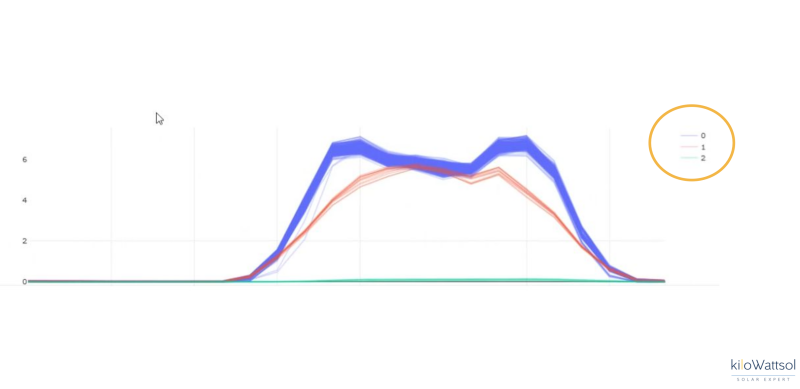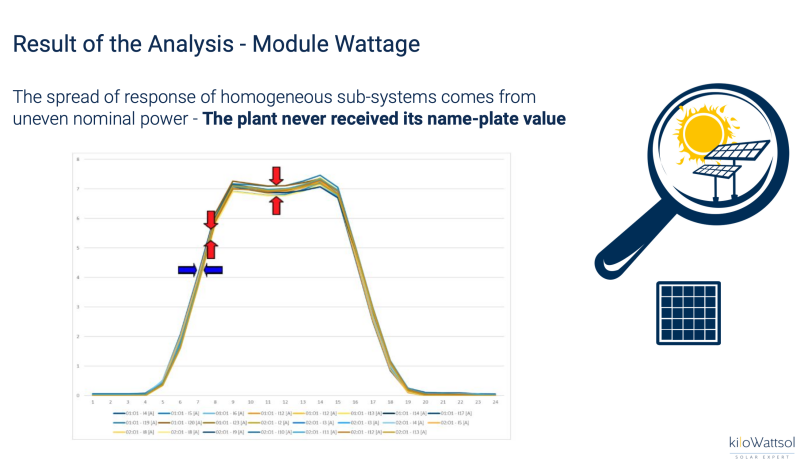Sinovoltaics and KiloWattsol collaborated on a joint webinar titled "PV Plant Optimization Techniques: How to Mitigate Quality Risks" on February 21, 2023. This webinar explored PV Plant optimization and techniques to reduce the risks, costs and optimize the performance of the solar power plant. The webinar's main points are summarized in this article. If you wish to rewatch the webinar, you can access it by clicking the link provided.

The commercial viability of a solar power plant depends mainly on the cost of acquisition and operation, energy efficiency, and reliability. Therefore, optimization of a solar power plant means optimization of energy efficiency, ensuring high reliability (risk mitigation), and low cost. Now, it is a fact that rarely, or never, does an operator produce its total equipment in-house. A certain percentage of parts will always be outsourced.
Thus, the quality and operational efficiency of your plant will become dependent on your suppliers introducing obvious quality risks. In some cases when faults appear during operation the source of fault may become difficult to pinpoint and costly legal disputes may arise. Outsourced or not, the quality of production of the equipment as well as its later operation in the field affects the economic viability of a PV power plant. Over the years, operators and engineers have developed methodologies for quality risk mitigation. Sinovoltaics for example has developed a methodology for quality PV power plants described by the acronym SOLID:
Standards implementation
Origin tracking
Large-scale Quality analysis
Inspection and supervision
Diagnostics.
We briefly describe below what each of these five letters stands for and then explain the practical significance through a case study.
1. Standards Implementation
Every process from design to production, shipment, installation, commission, operation, and maintenance must follow certain applicable and industry-wide accepted standards. While there are international standards covering key aspects such as general equipment design qualification and safety aspects, yet they often do not address in sufficient detail day-to-day production quality matters. Against this backdrop, some manufacturers may choose to have their own standards which could be even stricter (or milder). In any case, the standard agreed between supplier and buyer should generally be contractually embedded. There must be absolute clarity about what quality standards and criteria are to be followed. It is a good practice that all phases of a project from planning to operation should be subjected to agreed standards and criteria.
The word AGREED is important. It means that contracts with suppliers or service providers must be clear and specific in terms of standards to be applied and in other respects as we will see later. This means the desired quality standards must form part of the contracts for the equipment being manufactured. In fact, contract design is as important as PV power plant design.
Implementation of standards will invariably involve various test and measurement equipments. The output of these can only be relied on if they are properly calibrated and the calibration can be traced back to a reference standard. Unfortunately, calibration is also an aspect often ignored in the heat of day-to-day operations.
2. Origin Tracking
Where does your equipment come from? Not all your suppliers will be manufacturing or supplying their own component parts and (OEM) subcontracting is quite prevalent. From a quality point of view, it is important to know the original source of all components going into what you purchase. What quality standards are being followed at the subcontracted suppliers? Do they have a proper quality management system in place and are capable of following the agreed standards? What is their reputation in the market? It is therefore common practice that the production facilities of the actual manufacturer are audited and – if applicable – corrective actions are implemented before real production starts. In the contracting phase, the specific manufacturing location, and the specifications of OEM parts must be clearly mentioned.
Apart from risk mitigation, origin tracking is also crucial from a supply chain aspect. You want to be sure the supply chain is reliable. In this context, special consideration must be given to the relevant laws of the supplier country. In case of plant fault during operation, liability can only be determined if the supplier of the culprit component or subcomponent is known. A traceability audit during manufacturing can help getting more clarity about this issue.
3. Large-scale Quality Analysis
Quality testing is an important part of all projects. A sound quality testing program reduces risks of failure at later stages. Testing of samples per batch against sampling standard ISO 2859-1:1999 is a common quality assurance practice to derive statistical conclusions on the overall quality of a batch, especially in cases of large product quantities. Thus, the test results of samples can be used for statistical evaluation of the entire batch.
Nevertheless, since PV modules are critical items in a solar PV system - accounting for a major part of the plant cost - any minor fault in the module can mar the performance of the whole system. To ensure high reliability and quality confidence, Sinovoltaics employs large-scale quality analysis. This MASS TESTING of modules involves testing each piece individually. By subjecting each single module to quality analysis, our team is able to detect any minor faults which may develop later into much bigger issues that could cause major faults during operation.
While this approach is not feasible with standard, manual methodologies as these involve lots of quality engineers, thus making it very costly and time-consuming, Sinovoltaics employs 21st-century technology to perform large-scale quality analysis.
Sinovoltaics proprietary, AI-based quality analysis software SELMA (Sinovoltaics ELectroluminescence Mass Analysis) enables speedy and accurate analysis of hundreds and hundreds of MWs of EL images. SELMA is capable of testing and detecting up to 15 different cell-inherent defect types at the same time within less than 2 seconds and at 99% accuracy. Cell-inherent defect types identified include micro-cracks, solder faults, cell breakages, grid finger interruptions, dead cells, and so on. These minor defects may inflect heavy performance pains on the PV plant later on if allowed to slip through unnoticed. Therefore, Sinovoltaics’ large-scale quality testing is performed before the PV modules are shipped out so that the “bad eggs” can be offloaded from the “shipment basket”.
4. Inspection and Supervision
Quality Inspection and Production Supervision on-site at the factory is another important aspect of SOLID quality. Key to successful and solid quality projects is to ensure compliance of product manufacturing to a variety of parameters, including usage of certified materials, production according to a properly implemented quality management system, adherence to the agreed quality criteria, and of course production at the (audited) manufacturing facilities as contractually agreed and stipulated in the relevant product certificates.
5. Diagnostics
Diagnostics comes in when a malfunction is observed. Diagnostic tools will include measurement equipment, software, and the employment of scientific tools derived from mathematics and physics, such as by the French company KiloWattsol.
Sometimes fault tracing is a Sherlock Holmes story such as in a remarkable case study by the French PV plant diagnostic specialists.
The KiloWattsol Case Study; PV solar power plant design
This case study involves a 5MWp solar PV power plant of size,, consisting of 800 plus strings, five central inverters, 19,248 PV modules, and horizontal trackers was commissioned several years ago by an operator in France. Two things happened in March 2017 when the plant was just three months old:
1) Strong weather period when storm Zeus which hit France with wind speeds of about 120 Km/hr. The same month the power output, which was increasing month by month, started decreasing, then increased again but never reached the previous levels that it was designed for. The timing of the storm was such that it misled most people into thinking the storm was the culprit. A lot of diagnostic and repair activity could not bring the output anywhere close to previous levels. A court case against the supplier ensued but nothing could be proved until KiloWattsol (KWS)was engaged to investigate and advise. Tracking the investigation progress of KWS in this case has lessons for solar plant operators:
 Figure 1: Monthly yield superimposed with climate anomaly. Calculated yield figures are also shown.
Figure 1: Monthly yield superimposed with climate anomaly. Calculated yield figures are also shown.
1. KWS. calculated on their own what the power level should be based on the nameplate specifications of the modules if they worked perfectly. It turned out that it was not very far from the design figures. So, there was not much to be further investigated here.
2. KiloWattsol plotted recorded data for the monthly yield of the plant in the form of a bar chart and superimposed on it the two lines representing the estimates for expected output. In above Figure 1, the yellow line shows the expected output as calculated by KWS. This is compared quite closely to the blue line which shows the design estimate.
3. Figure1 showed the following:
(a) Yield estimates of the designer were not far different from the estimates of KWS.
(b) The actual output never came anywhere close to any of the two estimates.
(c) The yield increased by the month for the first three months and then started declining coincident with the arrival of the storm Zeus. Was this decreasing trend caused by the storm? Most experts believed so.
4. But KWS experts argued that the output of a PV plant operating normally always varies cyclically, showing peaks and dips due to weather variations. They called it climate anomaly. Was it that Zeus was not the culprit after all?
5. KWS plotted the data for all the strings of the plant against time. That was too many graphs to analyze. Using KWS own analytical software tools, they grouped the strings into three categories according to their daily power variation. Figure 2 below shows daily variations of all the strings, clearly falling into three groups.
 Figure 2: Daily variations of three distinct groups of strings
Figure 2: Daily variations of three distinct groups of strings
6. Most strings fell in a group. Group A marked blue showing a normal daily variation: rising to a peak in the morning, showing a slight dip around noon, another peak in the afternoon tapering off down to zero towards evening. The daily graph looked like an M-shape. Another group (B) of strings, in red, showed a gradual rise from morning till noon and then a similarly gradual down-tapering towards evening showing like a positive half cycle of AC. The third group (C), green, showed flat lines near zero, indicating no output throughout the day. That was the group of non-performing strings.
7. The noon-time dip in the power of group A was explained by noting that horizontal trackers were being used. Elevation of the sun changes with the hour of the day and at noontime, the incident flux is less normal to the module than at other time before and after noontime.
8. The behavior of group B was due to non-operating trackers. The modules were effectively fixed, and the sun variation caused the specific half-cycle variation in the output.
9. The tracker error was partly to blame, but the calculated effect could not alone account for the large deficiency in the plant output. Similarly, the effect of non-performing strings was calculated it could nowhere explain the discrepancy.
 Figure 3: Spread of the graphs for the strings gives the clue!
Figure 3: Spread of the graphs for the strings gives the clue!
10. The clue came from the spread in the graphs of the modules in a group, see above figure 3. If identical modules were used, the graphs for the strings must be nearly identical. But that was not the case. Some modules must not be produced according to nameplate parameters. Unfortunately, the original (subcontracted) module manufacturer could not be traced in the contract records. An audit of the manufacturer had not been done by the buyer.
Lessons Learned
This study raised some important take-home points in the context of Sinovoltaics’SOLID methodology described above.
1. Quality Control Standards were not followed by the manufacturer of the modules. Quality control was poor.
2. The purchaser of modules did not implement any quality inspection on-site at the manufacturer when the modules were being produced. Additional traceability and auditability measures would be beneficial for the purchaser and developer.
3. The contract did not specify the subcontracted OEM maker. So, the liability could not be transferred to the supplier.
4. Diagnostics tools help check performance losses by tracing the root cause of the fault.
5. Any deductions on the basis of test records have no legal value in a court if the test equipment calibration is not traceable to a reference standard.






